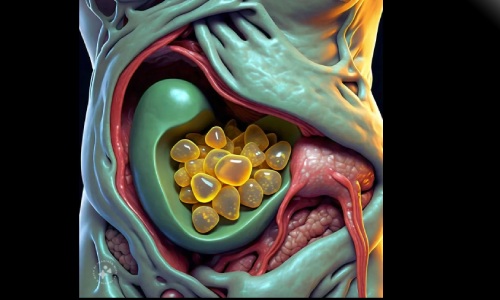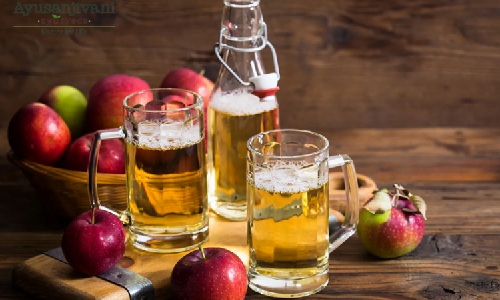Have you ever been told any of these things about gallbladder stones? As of now, these stones are quite small. You can wait. Your stones can be cured only by surgical intervention. It is harmless to remove your gall bladder. If yes, hit the pause button and listen to me first! Your gallbladder is not some extra part of your body that you can easily discard. Ayurvedically speaking, the gallbladder is an extension of your liver and plays a vital role in your gut health, or Agni, as we call it in Ayurveda. It’s known as “Pittashaya” – the seat of Pitta. This means it has a direct impact on your digestive system and overall metabolic health. Yet, so many people are misled into thinking that removing the gallbladder is a quick and easy fix. They’re told that “you can live perfectly healthy without it.” But believe me, that’s really not the case. The Hidden Truth About Gallbladder Removal Modern medicine typically asks to wait until the gallstones get bigger and then remove the gallbladder completely. This approach is not only reactive but also problematic. The liver is the most important digestive organ. When your gallbladder is removed, your liver will have to do extra work to compensate and keep your Agni balanced. In short, your digestive health will never be the same again. 90% of the patients who come to me after having their gallbladder removed have digestive health issues. Why You Should Consider Ayurveda First If the doctor diagnoses you with gallstones, do not allow them to grow too large to manage. Ayurveda provides a safe and effective alternative. The focus is on balancing the entire digestive system rather than simply getting rid of the stones. Gallstones often form due to imbalances in Pitta and Kapha Doshas. By addressing these imbalances through diet, lifestyle changes, and herbal remedies, you can dissolve the stones and prevent new ones from forming. Ayurvedic Approach to Gallbladder Stones Ayurveda’s approach to treat gall stones, like any other, involves correcting the root causes first. This prevents the condition from recurring. Dietary changes Food is your first medicine in Ayurveda. A diet that aggravates Pitta – spicy, oily, and processed foods – is often the root cause of gallstone formation. By switching to a Pitta-pacifying diet, you can create a healthier environment in your body. Have cooling foods like cucumber, coriander and coconut water. Stay away from rich, fried and heavy foods. Consume whole grains and seasonal vegetables. Herbal remedies Ayurveda uses mild, non-heating, and non-drying herbs to dissolve gallstones naturally. Some commonly used herbs include: Kulattha (Horse gram): Known for its ability to break down stones. Punarnava: Reduce inflammation and clear obstructions in the channels. Triphala: A mild but effective detoxifier for ensuring timely bowel movements. However, none of these herbs should be consumed without the proper guidance and recommendation of a qualified Ayurvedic doctor. Daily routines Following a disciplined daily routine can significantly improve your digestion and overall health: Drink warm water with a squeeze of lemon every morning. Practice yoga poses like Bhujangasana (Cobra Pose) and Pavanamuktasana (Wind-Relieving Pose) to improve digestion and bile flow. Avoid heavy meals late at night, as your digestive fire is weakest during this time. Oil massages (Abhyanga) and sweating therapies (Swedana) assist in detoxifying the body and improving bile flow. These therapies help to activate the Srotas (microchannels) to help release the toxins out of the body. The Power of Early Intervention Doctors advise most people to wait until their stones grow larger before considering any action. But why wait for things to get worse? As soon as you’re diagnosed with gallstones, it’s time to take action. A three-month Ayurvedic program, tailored to your unique body type and Dosha imbalances, can effectively treat gallstones in their early stages. Here’s what a typical Ayurvedic program looks like: A personalized diet plan that balances Pitta and Kapha. Herbal formulations designed to dissolve stones and prevent recurrence. Lifestyle changes that support optimal digestion and liver health. What If You’ve Already Had Surgery? If they have already removed your gallbladder, don’t worry. Ayurveda can still help you. However, you’ll need to be extra cautious about your diet and lifestyle. Eliminating Pitta-aggravating foods becomes even more critical. You’ll also benefit from herbs that support liver function and digestion. Some tips for post-surgery care: Avoid spicy, acidic, and heavy-to-digest foods. Focus on foods that are easy on the stomach, like steamed vegetables and soups. Include liver-supporting herbs like Guduchi and Amla in your daily routine. Re-aligning With Nature Ayurveda is not about any quick fix or miracle cure. It’s about attuning your body to the rhythm of nature and fixing the root cause of your health issues. When it comes to gallstones, this means restoring balance of your digestive system, improving bile flow, and preventing the formation of new stones. Following this will not only break down gallstones but also energize your health. You’ll learn that with the right guidance, you can lead a full, healthy life without switching to extreme surgical procedures. Remember, Your gallbladder is integral to your digestive health. You can live without it, but it will have repercussions. With Ayurveda, you have the opportunity to heal your body naturally and holistically. So, the next time someone tells you that surgery is the only solution, remember: You have options. Seek the guidance of an experienced Ayurvedic doctor and take control of your health today. Ready to explore the Ayurvedic way of treating gallstones? Start now. Your body will thank you later! If you are struggling with any health issues, you can either book a consultation with us or send us a message via WhatsApp to +91 79074 89839. We have the best Ayurvedic doctors in Trivandrum who are… Continue reading Gallbladder Stones Treatment in Ayurveda
Gallbladder Stones Treatment in Ayurveda









